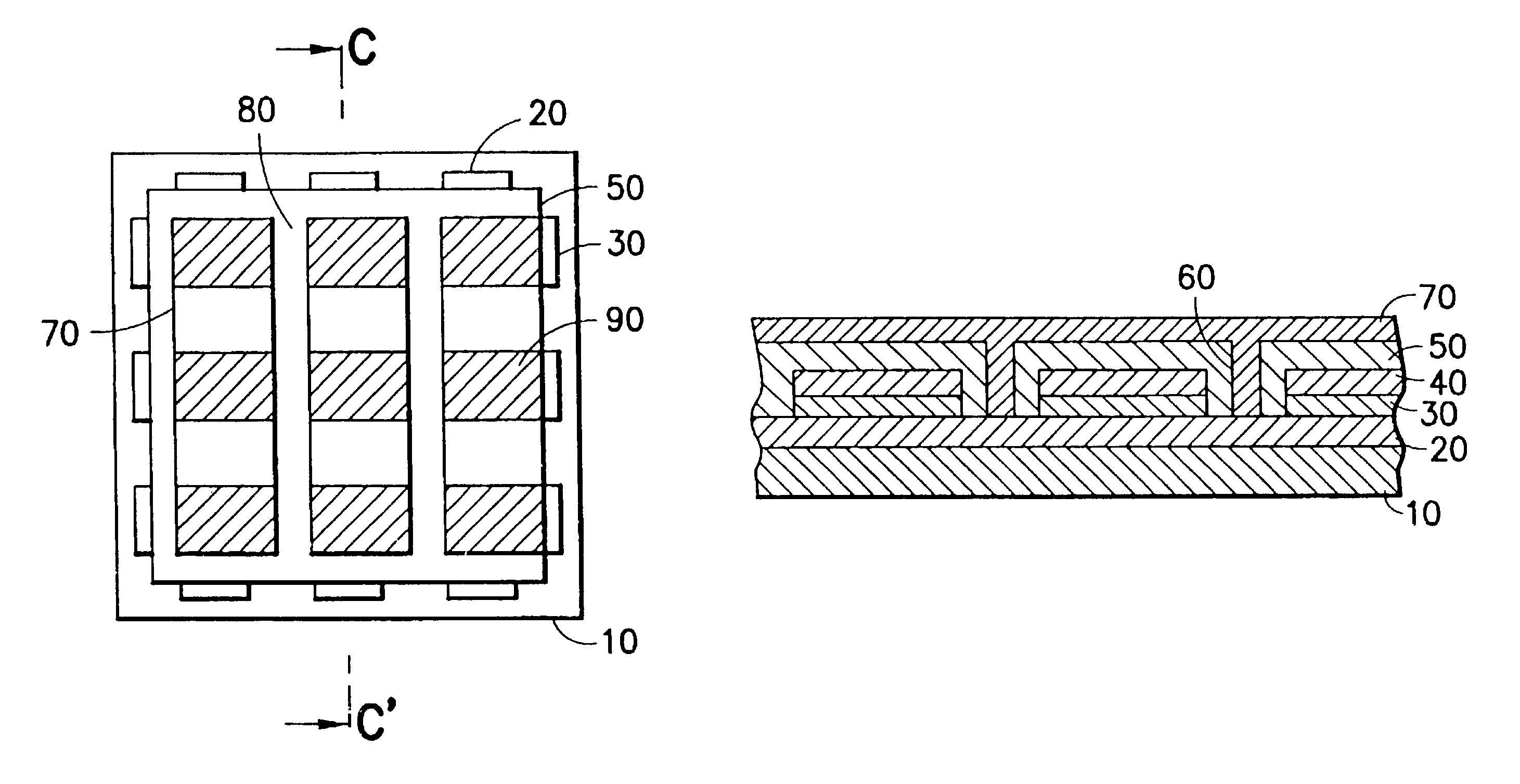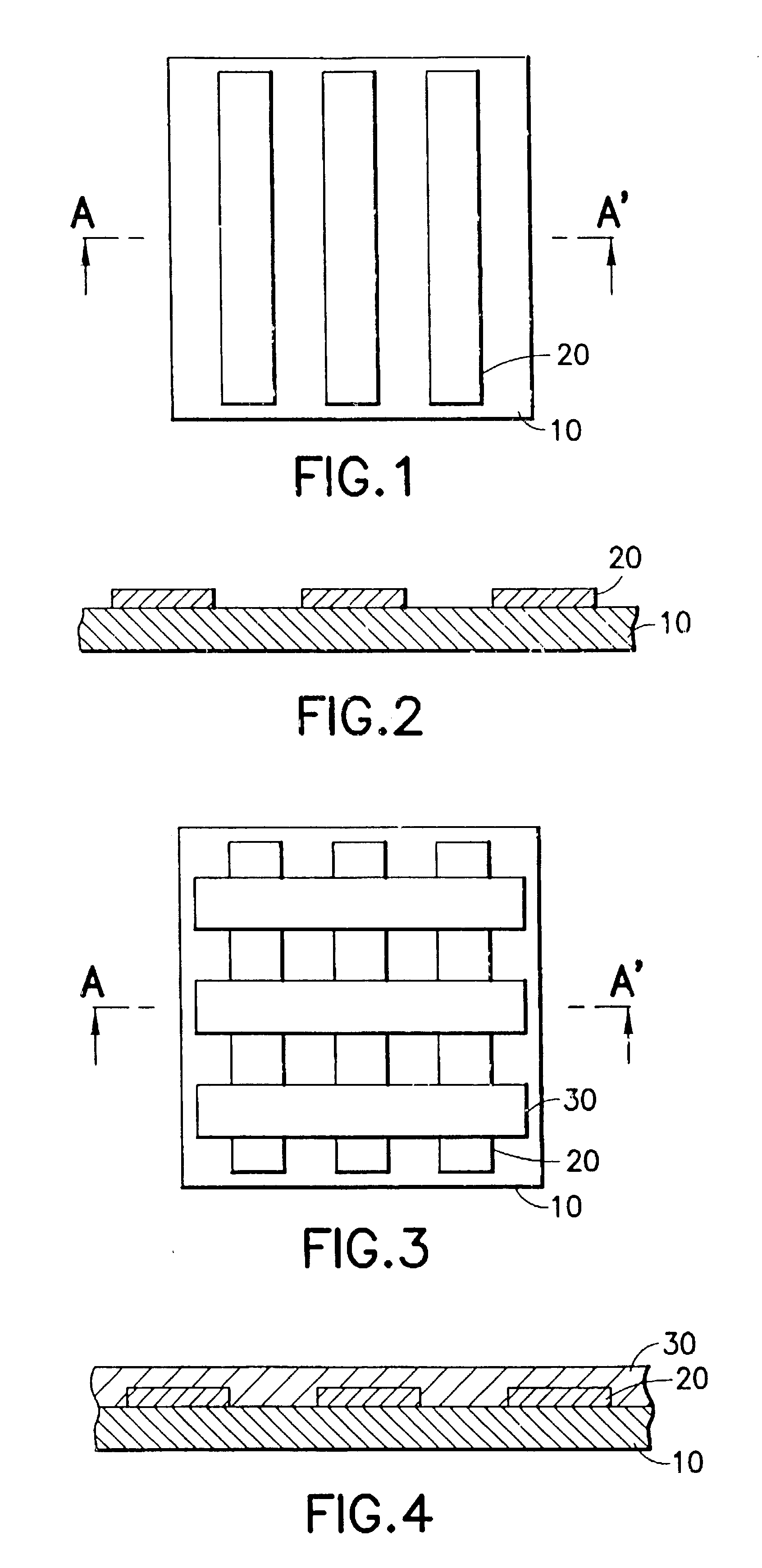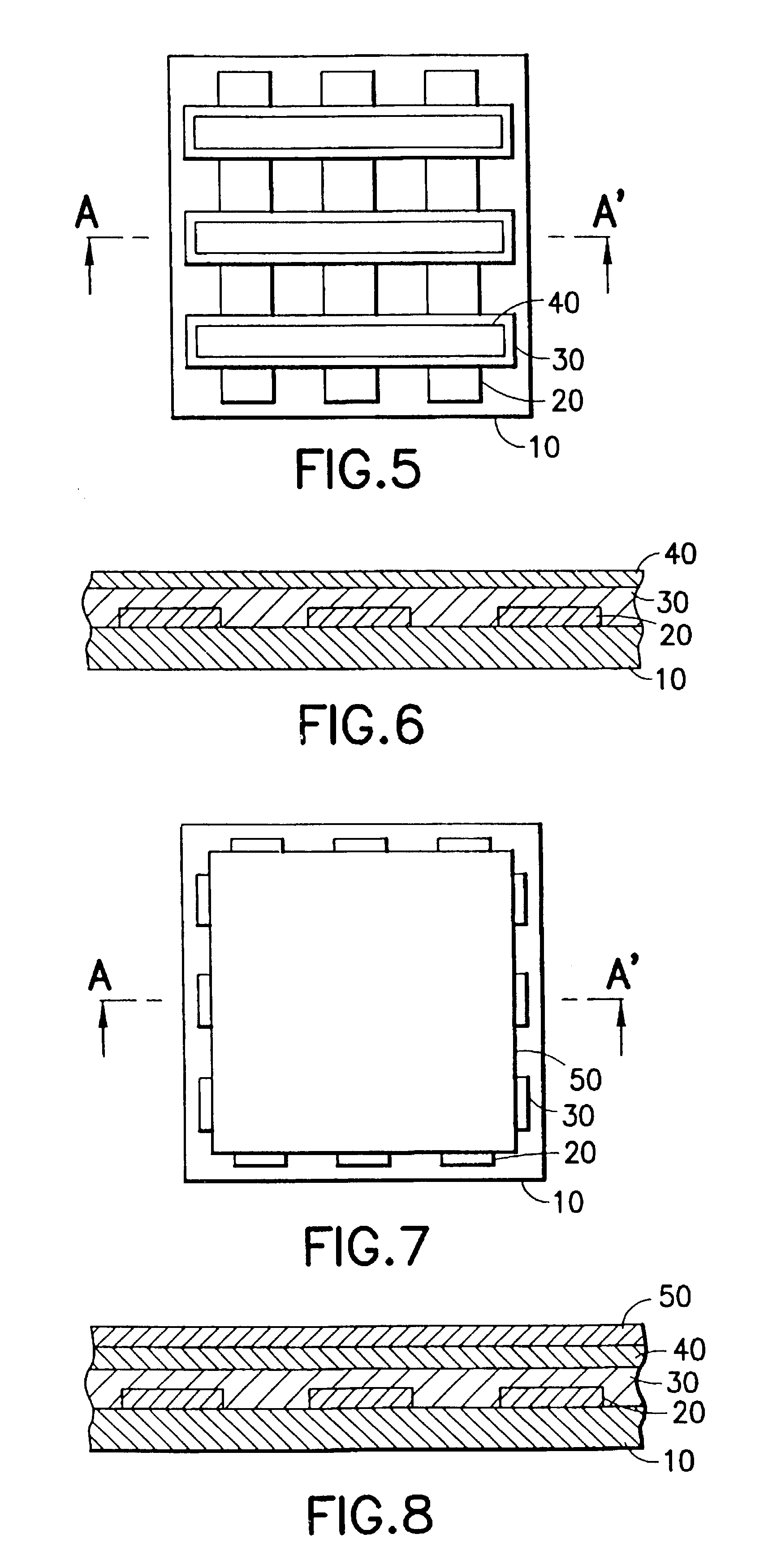Organic light emitting devices
a light-emitting device and organic technology, applied in the direction of basic electric elements, semiconductor devices, electrical equipment, etc., can solve problems such as affecting the quality of displayed images
- Summary
- Abstract
- Description
- Claims
- Application Information
AI Technical Summary
Benefits of technology
Problems solved by technology
Method used
Image
Examples
Embodiment Construction
What follows now is a description of a passive matrix OLED embodying the present invention and methods for fabricating such an OLED.
Referring first to FIGS. 1 and 2 in combination, in a preferred embodiment of the present invention, first electrode layer of electrically conducting material 20 is deposited on a substrate 10. The substrate 10 may be formed from a light transmissive material such as glass or plastics or from an opaque material such as a Silicon wafer. The first electrode layer 20 may be formed from a range of different materials, including but not limited to Indium Tin Oxide, Indium Zinc Oxide, Aluminum Zinc Oxide, Aluminum, Nickel, Copper, Platinum, and Iridium, or combinations of the aforementioned materials with organic and / or inorganic charge injection layers. The first electrode layer 20 comprises an array of parallel strips. In particularly preferred embodiments of the present invention, the strips of the first electrode layer 20 can be formed by evaporation and ...
PUM
 Login to View More
Login to View More Abstract
Description
Claims
Application Information
 Login to View More
Login to View More - R&D
- Intellectual Property
- Life Sciences
- Materials
- Tech Scout
- Unparalleled Data Quality
- Higher Quality Content
- 60% Fewer Hallucinations
Browse by: Latest US Patents, China's latest patents, Technical Efficacy Thesaurus, Application Domain, Technology Topic, Popular Technical Reports.
© 2025 PatSnap. All rights reserved.Legal|Privacy policy|Modern Slavery Act Transparency Statement|Sitemap|About US| Contact US: help@patsnap.com



